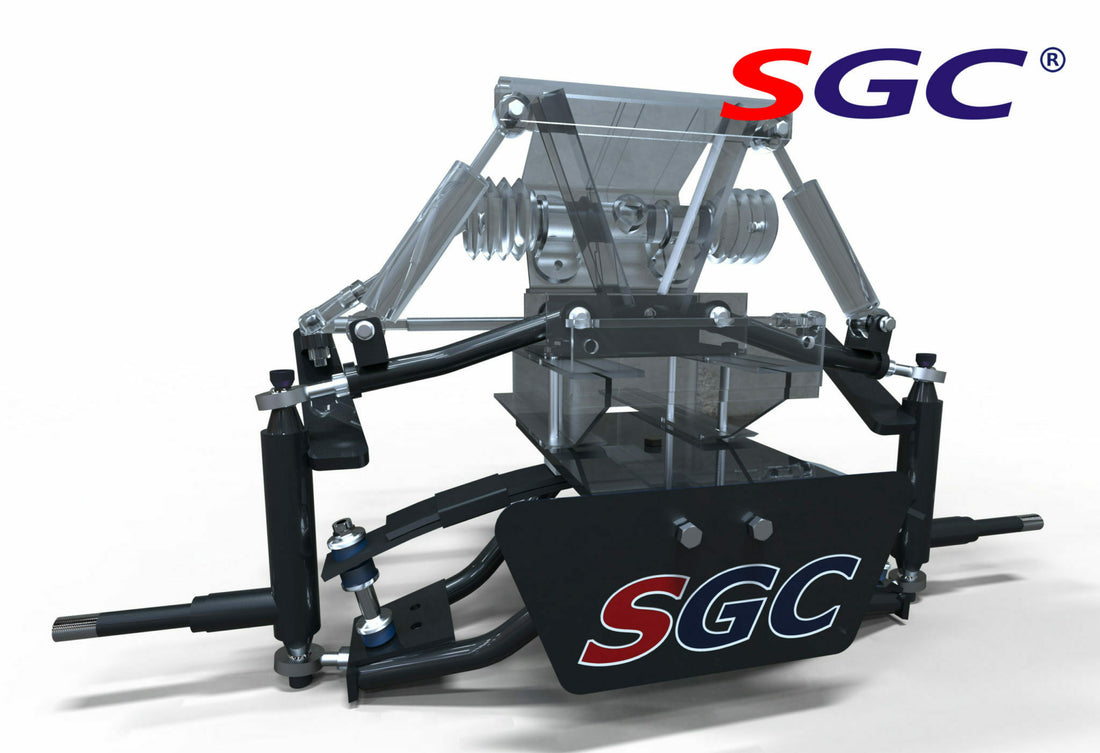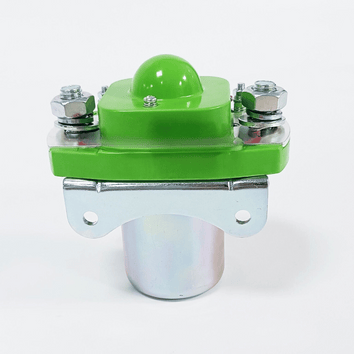How to Troubleshoot Common Golf Cart Electrical Issues
Introduction
Hey there, fellow golf cart enthusiasts! If you’ve ever found yourself stranded on the green with a stubborn cart that just won’t budge, you’re not alone. Electrical issues are the bane of every golf cart owner’s existence, but fear not! We’re here to help you navigate the maze of wires, batteries, and mysterious clicks that make up your cart’s electrical system.
In this guide, we’ll walk you through the most common electrical gremlins that plague our beloved carts and show you how to send them packing. Whether you’re a seasoned tinkerer or a complete novice, we’ve got tips and tricks that’ll have you troubleshooting like a pro in no time. So grab your toolbox, and let’s get that cart purring again!
Understanding Your Golf Cart’s Electrical System
Before we dive into the nitty-gritty of troubleshooting, let’s take a quick tour of your golf cart’s electrical system. Think of it as the nervous system of your cart – it’s what keeps everything running smoothly.
The heart of the system is your battery (or batteries, if you’re rolling in style with a 36 or 48-volt setup). These powerhouses provide the juice that gets your cart moving. Next up, you’ve got the motor, which turns that electrical energy into motion. The solenoid acts like a traffic cop, controlling when power flows to the motor. Your direction switch tells the cart whether to go forward or backward, and the speed controller (also known as the potentiometer) regulates how fast you’re cruising.
All these components work together in harmony – when they’re behaving, that is. Regular maintenance is key to keeping this electrical orchestra in tune. A little TLC goes a long way in preventing those dreaded breakdowns.
Essential Tools for Troubleshooting
Before you start poking around under the hood, make sure you’ve got the right tools for the job. Here’s your troubleshooting toolkit:
- Voltmeter: This handy device measures the electrical potential between two points in your circuit. It’s essential for checking battery health and diagnosing other electrical issues.
- Hydrometer: Use this to check the specific gravity of your battery’s electrolyte solution. It’s like a health check-up for your battery cells.
- Wire brush: Perfect for cleaning off corrosion and ensuring good electrical connections.
- Safety equipment: Don’t forget your gloves and safety goggles. We’re dealing with electricity and battery acid here, folks – better safe than sorry!
Battery Issues and Solutions
Alright, let’s tackle the big one first – battery problems. These power cells are often the culprit behind a whole host of electrical issues. Here’s how to keep them in tip-top shape:
- Check the charge: Use your voltmeter to measure the voltage across the battery terminals. A fully charged 6-volt battery should read around 6.3 volts, while a 12-volt battery should be about 12.6 volts. If you’re significantly below these numbers, it’s time for a charge.
- Water levels: Pop those cell caps and take a peek inside. The water should cover the plates but not reach the fill line. If it’s low, top it up with distilled water – never use tap water!
- Clean connections: Corrosion on your battery terminals is like cholesterol in your arteries – it blocks the flow of electricity. Use your wire brush and a mixture of baking soda and water to clean off any crusty build-up.
- Weak links: If one battery in your pack is consistently underperforming, it might be time for a replacement. Remember, a chain is only as strong as its weakest link!
- Charging habits: Always fully charge your cart after use. Partial charges can lead to sulfation, which reduces battery life. Think of it like getting a good night’s sleep – your batteries need it to perform their best!
Extreme Kartz carries 36, 48, and 72-volt lithium batteries, chargers, and accessories.
Motor Problems and Fixes
If your battery checks out but your cart still won’t move, the motor might be the culprit. Here’s how to troubleshoot:
- The magic button: Believe it or not, many motor issues can be solved with a simple reset. Look for a small red button near the main power supply. Press it, reassemble everything, and give it another go.
- Separate test: If that doesn’t work, try connecting the motor directly to a fully charged battery. If it springs to life, your problem lies elsewhere in the electrical system.
- Wear and tear: If the motor’s still silent, it might be time for some maintenance. Check for worn brushes, damaged bearings, or issues with the field coils. These are often fixable with a bit of elbow grease and the right parts.
- Know when to fold ’em: Sometimes, a motor is just too far gone. If you’re dealing with a damaged armature or housing, it’s often more cost-effective to replace the whole motor rather than attempt repairs.
Extreme Kartz carries motor-controller kits for Club Car, Yamaha, EZGO golf carts, and more.
Solenoid Troubleshooting
Ah, the solenoid – that mysterious little device that makes the satisfying “click” when you turn the key. If you’re not hearing that click, here’s what to do:
- Listen closely: When you turn the key, you should hear a distinct click. No click? Your solenoid might be the problem.
- Check connections: Loose wires are often the culprit. Make sure all connections to and from the solenoid are tight and corrosion-free.
- Coil check: If the connections are good, the coil inside the solenoid might be broken. This usually means it’s time for a replacement.
- Professional help: Solenoid issues can be tricky. If you’re not comfortable diagnosing the problem yourself, it’s best to consult a professional. Better safe than sorry when it comes to electrical components!
Guess what? Extreme Kartz carries heavy-duty solenoids for golf carts too!
Direction Switch Issues
Forward, reverse, forward, reverse – we put our direction switches through a lot! Here’s how to tell if yours is on the fritz:
- Inconsistent response: If your cart sometimes goes in the right direction and sometimes doesn’t, your switch might be wearing out.
- Strange noises: Grinding or clicking sounds when changing direction can indicate a problem with the switch mechanism.
- Replacement time: Unfortunately, direction switches aren’t usually repairable. If you’re experiencing issues, it’s often best to replace the entire unit.
Speed Control Problems
Is your cart crawling along like a turtle or zooming off like a hare? Your potentiometer might be to blame. Here’s what to look for:
- Erratic speed: If your cart’s speed is all over the place, the potentiometer might be failing.
- Visual inspection: Check for any cracks in the potentiometer housing or loose connections.
- Adjustment: Sometimes, a simple adjustment can solve speed control issues. Consult your cart’s manual for the proper procedure.
- Replacement: If adjustments don’t help, you might need to replace the potentiometer. This is a job best left to professionals unless you’re very comfortable with electrical work.
Other Electrical Components to Check
Don’t forget about these often-overlooked parts of your cart’s electrical system:
- Wiring harness: Check for any frayed or damaged wires throughout the cart.
- Fuse box: A blown fuse can cause all sorts of electrical gremlins. Check and replace any blown fuses.
- Key switch: If your cart won’t turn on at all, the key switch might be the culprit.
- Charger port: A damaged charger port can prevent your batteries from charging properly.
Preventative Maintenance Tips
An ounce of prevention is worth a pound of cure, especially when it comes to golf cart electrical systems. Here are some tips to keep your cart running smoothly:
- Regular battery care: Check water levels monthly and clean terminals every few months.
- Keep it clean: Dirt and debris can cause electrical issues. Give your cart a good cleaning regularly.
- Proper storage: If you’re storing your cart for the winter, keep the batteries charged and disconnect them to prevent drain.
- Address issues promptly: Don’t ignore small problems – they can turn into big (and expensive) ones if left unchecked.
When to Seek Professional Help
While many electrical issues can be solved with a bit of DIY spirit, some problems are best left to the pros. Consider calling in an expert if:
- You’re dealing with complex electrical issues beyond your comfort level.
- There are safety concerns, such as sparking or burning smells.
- Your cart is under warranty – DIY repairs might void it.
Conclusion
There you have it, folks – your guide to conquering common golf cart electrical issues. Remember, a little knowledge goes a long way in keeping your cart running smoothly. Regular maintenance and prompt attention to problems will help ensure many happy hours of cruising the greens.
Don’t be afraid to get your hands dirty (figuratively speaking – always wear those gloves!), but also know when it’s time to call in the cavalry. With these tips in your back pocket, you’ll be well-equipped to handle whatever electrical curveballs your golf cart throws your way.

















